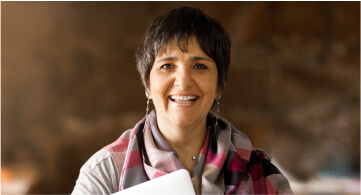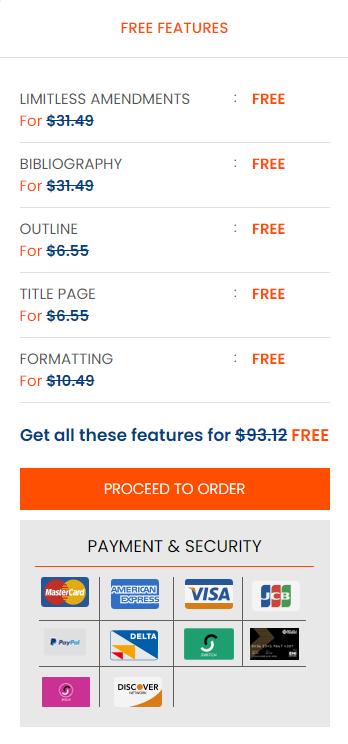A Framework for Inclusive Practices
Objective: To be able to define and provide examples of “accommodations†and “universal design;†compare with other proactive approaches, components of a Universal Design in Higher Education (UDHE) Framework (scope, definition, principles, guidelines, practices, process), and potential roles of key stakeholders.
Textbook Reading: Chapter 2
PART 1: After reviewing the resources included below: Campuses typically use an accommodation approach in their efforts to provide access for individuals with disabilities rather than a proactive, inclusive approach. Explain why you think UD is not routinely applied in higher education. 1 and ½ Page Assignment and a ½ page reflection/synopsis. (2 pages) Be sure to include references, in APA format
Your responses should be SUBSTANTIVE (but, not overly exhaustive when appropriate): they should demonstrate a serious engagement with the text(s)/video(s),etc. all claims you make should be fully and completely explained and claims about what the text says should be backed with PROPER quotations and/or evidence from the text and or reflections of the videos. Be sure to provide enough reference information in your responses so that we can find the page/quotation/etc. that you are referring to or discussing in your responses. YOU MAY NOT USE ANY OUTSIDE SOURCES – ONLY WHAT IS PROVIDED.
Overview
In this unit we will discuss approaches for making educational opportunities accessible to students with disabilities. By its end you should be able to
1) compare UD with other proactive approaches to design, including design for all, barrier-free design, accessible design, and usable design.
2) explain differences between an accommodations approach and the UDHE Framework for ensuring access to postsecondary offerings for students with disabilities.
3) describe components of a UDHE Framework—definition, principles, guidelines, practices, and process.
4) name the three sets of principles that underpin the UDHE Framework.
5) explain how the UDHE Framework can be adapted to specific application areas.
6) suggest motivations individuals might have for applying UDHE.
7) describe how stakeholder roles might change if the UDHE Framework is adopted.
8) apply UDHE practices to physical spaces, teaching and learning activities, information technology (IT), and student services.
Accommodations
Although more students with disabilities are attending postsecondary education, they experience far less academic and career success than their nondisabled peers. Inaccessible science labs, curriculum materials, videos, websites, and online courses contribute to this problem.
Calling educational activities and programs “high quality” should mean that they are accessible to everyone who might want and who qualifies to participate. VIEW the two minute video at the following link to hear what students with disabilities feel about this concept.
CTRL + CLICK: Quality Education Is Accessible
Traditional efforts to assist students with disabilities on campuses nationwide embrace a “medical model†of disability, where focus is on the “deficit†of the individual and how the person can be rehabilitated or how accommodations can be made so that he/she can fit into an established environment. This is an improvement over earlier days when individuals with disabilities were simply excluded from educational opportunities.
Differences in legislation result in different services at K-12 and postsecondary levels in the United States. Guided mainly by the Individuals with Disabilities Education Act (IDEA) and the Americans with Disabilities Act, including its 2008 Amendments, in our K-12 schools, every child, including those with disabilities, is offered a free, appropriate education in as integrated setting as possible. IDEA does not apply in higher education, where students must meet the entrance/course/graduation requirements with or without reasonable accommodations that they must request. Content in the following table shares some of the implications for services at these two educational levels.
(FROM A TWO COLUMN TABLE)
K-12 Education ( COLUMN 1)
School identifies disability & provides assessment
School pays for services for all students with disabilities
School provides specially designed instruction, modifi-cations, accommodations
School provides personal assistant
Parents involved
Postsecondary ( COLUMN 2)
Student/employee self-identifies & provides documentation
School/employer pays for reasonable accommodations for otherwise qualified person
Standard curriculum/job assignment without changing essential requirements
School/employer does not provide personal assistant
Parents usually not involved
(END OF TABLE)
So what is an accommodation?
An accommodation adjusts a product or environment to provide access to a specific person with a disability. Examples of accommodations include
· Extra time on tests
· Proctored exams
· Materials in alternate format
· Alternative assignments
· Moving to accessible classroom
· Sign language interpreters
· Note taker
Some faculty members have expressed the opinion that an accommodation for a specific student with a disability gives them unfair advantage in the class. Even though this is not the intent of an accommodation, it is important to be aware that some people may have this incorrect assumption and it may need to be addressed. It is human nature to expect fairness. VIEW the short (less than three minutes) clip of a TED Talk for evidence about how basic the sense of fairness might be in the animal kingdom.
WATCH
Two Monkeys Were Paid Unequally: Excerpt from Frans de Waal’s TED Talk
https://www.youtube.com/watch?app=desktop&v=meiU6TxysCg&feature=youtu.be
VIEW the video linked below for an example of an accommodation, CART, provided on some postsecondary campus for students who are deaf.
CTRL + CLICK: Communication Access Realtime Translation: CART Services for Deaf & Hard-of-Hearing People
“Invisible disabilities,” meaning those that are not always obvious to other people, sometimes pose more difficult challenges to both the student and the instructor of an on-site or online course than more obvious disabilities such as blindness, deafness, or mobility impairments. VIEW the 18-minute video at the link below to learn about accommodations for students with invisible disabilities.
CTRL + CLICK: Invisible Disabilities and Postsecondary Education (Links to an external site.)
READ the publications at the links below to learn more about academic accommodations for students with learning and psychiatric disabilities. Consider which access challenges and accommodations are relevant to online instruction.
· Academic Accommodations for Students with Learning Disabilities (Links to an external site.)
· Academic Accommodations for Students with Psychiatric Disabilities (Links to an external site.)
· An Accommodation Model (Links to an external site.)
(c) 2017- Sheryl Burgstahler. All rights reserved.
PART 2: After reviewing the resources included below: Look at the disability service office websites at any two postsecondary institutions. Share the names of the schools and their URLs and summarize differences in the information you find at each. Tell (1) which collection of information you think would be more helpful to a new student with a disability and why and (2) of any examples of the promotion of universal/inclusive design on each school’s website. 2 and ½ Page Assignment and a ½ page reflection/synopsis. (3 pages) Be sure to include references, in APA format
Your responses should be SUBSTANTIVE (but, not overly exhaustive when appropriate): they should demonstrate a serious engagement with the text(s)/video(s), etc. all claims you make should be fully and completely explained and claims about what the text says should be backed with PROPER quotations and/or evidence from the text and or reflections of the videos. Be sure to provide enough reference information in your responses so that we can find the page/quotation/etc. that you are referring to or discussing in your responses. YOU MAY NOT USE ANY OUTSIDE SOURCES – ONLY WHAT IS PROVIDED.
Accessible and Universal Design (UD)
What is Meant by “Accessibility,” “Access,” and “Accessible”?
Various forms of these terms are used everywhere.
· What are the hours of access to the hotel swimming pool?
· How do I access the help function in this application?
· When choosing an online course I am concerned about its accessibility from my iPhone.
· Does the staircase give access to roof garden area?
· This sporting event is not accessible to many people because of its high cost.
· I can use this program to access the data I need to analyze.
· Does my gym membership give me free access to the exercise classes?
· When I travel in foreign countries I always consider accessibility issues because I am a wheelchair-user.
· This new bypass improves access to the city center.
· This agency provides scholarships to increase access to postsecondary education to students in rural communities.
· Public-access television is worthy of our support.
· The pool is accessed through the locker rooms for men and for women.
· Here is the password you can use to access the office network.
· Broad accessibility to pro sports is constrained by their high cost.
In this course, I embrace a broad definition of “accessible” when referring to access to course or other postsecondary offering by people with disabilities. My favorite definition is used by the U.S. Department of Justice the U.S. Department of Education Office of Civil Rights when speaking of “accessible” IT.
“Accessible†means a person with a disability is afforded the opportunity to acquire the same information, engage in the same interactions, and enjoy the same services as a person without a disability in an equally effective & equally integrated manner, with substantially equivalent ease of use. The person with a disability must be able to obtain the information as fully, equally & independently as a person without a disability.
That definition appropriately sets a high bar with respect to access for people with disabilities.
My goal in this course is to make it accessible to students with a wide range of characteristics. This may not technically include everyone, but that is what I am shooting for. “Everyone” includes students with disabilities, but also students with various learning preferences, students whose first language is not in the language in which the instruction is delivered (English language learners in the case of this course), students using a variety of devices and web browsers, and those with slow Internet connections. I know I will not fully achieve this goal, but as new versions of this course are created, I will get closer and closer to the mark, in part by listening to input from my students.
So, as you learn about accessibility in this course, let me know if you notice I have used an inaccessible strategy that could be corrected. That is how this course will become better over time. And, you may even give me information to share with the publisher of the learning management system (LMS) I used to create and deliver this course.
Equivalent and Alternative Access
Another set of terms you will run into in this course and its references is “equivalent access” and “alternative access.” “Equivalent access” typically refers to providing access to individuals with disabilities that is identical to that provided to others. It may, however, be presented in a different mode. In contrast, “alternative access” provides the person with a disability with a learning experience that differs from that of others but is designed to achieve the same goal. An example of equivalent access is providing captions on video presentations; providing a transcription of the content of the video would be alternative access). In postsecondary education, equivalent access should be provided whenever possible and reasonable; otherwise, alternative access should be provided. If, for example, you link to a video available through another organization that is not captioned, consider asking the producer to caption it for equivalent access. If they are unwilling to do this, consider having them create or create yourself a transcript to include in your course for anyone who is unable to access the audio. This way, a student who is deaf will at least have alternative access to the content.
Customizable Content
To reach the broadest audience, allowing online learning content to be customized by the student is desirable. When courses present information in a versatile manner, the content is more accessible to students with a wide variety of needs and preferences. Customizable features may include display elements (e.g., font style, color and size; cursor size, style and blink rate; image and video size; and screen layout, colors and backgrounds) and interface features (e.g., timing of events, keyboard settings).
Traditional efforts to assist students with disabilities on campuses nationwide embrace a “medical model†of disability, where the focus is on the “deficit†of the individual and how the person can be rehabilitated or how accommodations can be made so that he/she can fit into an established environment.
What is Meant by Universal Design?
But, some people, including myself, recommend that more attention be paid to the design of the product or environment itself. To make this point, consider the following “Coffieepot for Masocists” from the Catalog of Unfindable Objects by Jacques Carelman in Donald Norman’s The Psychology of Everyday Things, 1988.
(see COFFEE POT IMAGE GIF) Not many people could efficiently and safely poor coffee from this pot, which has the spout and the handle on the same side. I doubt that many of us would think that trying to simply modify this product so that it is more usable would be a worthwhile use of time. Instead, I think most of us would agree that the product itself should be re-designed so that it can be used by everyone who needs to use it. Similarly, when it comes to students with disabilities in educational settings, simply providing accommodations when individuals with disabilities experience access challenges may lead to inefficiencies. The “social model†of disability and other integrated approaches within the field of disability studies consider variations in abilities—like those with respect to gender, race, and ethnicity—a natural part of the human experience. This view suggests that more attention should be devoted to designing products and environments—including courses, technology, and student services—that are welcoming and accessible to everyone.
But Could UD Ever Be An Accepted Practice?
Does UD sound like a good idea that no one will implement? Many people thought about curbcuts in that way. Below is an image of an article that appeared in the UW Daily publication in 1970. The picture shows a UW students with a sign on the back of his wheelchair that reads “Ramp the curbs. Keep me off the street.” He was one of the advocates for curbcuts on sidewalks so that people in wheelchairs can go from the sidewalk to the street level without negotiating a curb. There were many people who thought this was good idea but it would never happen…there were just too many curbs that would need to be redone.
(see UWDailyCurbcuts IMAGE GIF)
Today, it is commonly accepted that sidewalks should have curbcuts. And, who benefits from them? Parents pushing baby strollers, delivery personnel with rolling carts, skate boarders, … not just citizens with disabilities. This is an example of the widespread application of universal design to the physical environment. It’s success can encourage us to push for more educational products and environments to be accessible as well.
UD is accessible, usable, and inclusive. It is an attitude, a framework, a goal, and a process.
· UD values diversity, equity, & inclusion.
· UD promotes best practices & does not lower standards.
· UD is proactive & can be implemented incrementally.
· UD benefits everyone & minimizes the need for accommodations.
There are other terms used to describe proactive approaches similar to universal design. They include
· Barrier-free design
· Accessible design
· Usable design
· Design for all
· Inclusive design
“Accessible design” is often used when referring to making the built environment accessible to people with mobility impairments. “Usable design” attends to making sure that people can actually effectively use a product for the purpose it was intended for. “Barrier-free design” and “design for all” are more commonly used in countries other than the U.S. for applications vary similar to UD. “Inclusive design” is often used synonymously with “universal design.” You should be careful though, not to confuse it with how “inclusion” is used in the K-12 education level, where any modification, regardless of how it impacts course standards, might be used to make a course appropriate for a student with a disability. In higher education, universal or accessible design does not lower course standards.
An Example of the Value of Universal Design
Sit back and enjoy a Ted Talk that demonstrates the value of a universal design to fighter pilots.
WATCH
https://www.youtube.com/watch?app=desktop&v=4eBmyttcfU4
The Myth of Average: Todd Rose at TEDxSonomaCounty
A Resource
You will find a rich set of resources at the online Center for the Universal Design in Education (CUDE) linked below and included in the course Library. Many will be referenced in this course.
CTRL + CLICK: The Center for Universal Design in Education (CUDE)
(c) 2017- Sheryl Burgstahler. All rights reserved.
Foundational UD Principles
In this course you will learn about various principles and processes for applying UD to specific products and environments in postsecondary education. Below I have summarized the original and most general principles of UD.
Universal design (UD)—defined as “the design of products and environments to be usable by all people, to the greatest extent possible, without the need for adaptation or specialized design.â€â€”is an approach that is consistent with the social model of disability, addresses other diversity issues as well, and has the potential to reduce the need for some individual accommodations. UD challenges society to construct a world where everyone can participate with maximum independence. When UD principles are applied, products and environments meet the needs of potential users with a wide variety of characteristics. Disability is just one of many characteristics that an individual might possess. For example, one person could be Hispanic, six feet tall, male, thirty years old, an excellent reader, primarily a visual learner, and deaf. All of these characteristics, including his deafness, should be considered when developing a product or environment he, as well as individuals with many other characteristics, might use. At the Center for Universal Design (CUD) at North Carolina State University, a group of architects, product designers, engineers, and environmental design researchers established seven principles of UD to provide guidance in the design of products and environments. Following are the CUD principles of UD, each followed with an example of its application:
1. Equitable use. The design is useful and marketable to people with diverse abilities. For example, a website that is designed to be accessible to everyone, including people who are blind, employs this principle.
2. Flexibility in use. The design accommodates a wide range of individual preferences and abilities. An example is a museum that allows visitors to choose to read or listen to the description of the contents of a display case.
3. Simple and intuitive. Use of the design is easy to understand, regardless of the user’s experience, knowledge, language skills, or current concentration level. Science lab equipment with clear and intuitive control buttons is an example of an application of this principle.
4. Perceptible information. The design communicates necessary information effectively to the user, regardless of ambient conditions or the user’s sensory abilities. An example of this principle is captioned television programming projected in noisy restaurants.
5. Tolerance for error. The design minimizes hazards and the adverse consequences of accidental or unintended actions. An example of a product applying this principle is software applications that provide guidance when the user makes an inappropriate selection.
6. Low physical effort. The design can be used efficiently, comfortably, and with a minimum of fatigue. Doors that open automatically for people with a wide variety of physical characteristics demonstrate the application of this principle.
7. Size and space for approach and use. Appropriate size and space is provided for approach, reach, manipulation, and use regardless of the user’s body size, posture, or mobility. A flexible work area designed for use by employees with a variety of physical characteristics and abilities is an example of applying this principle.
Think about other products in your environment that cause you frustration because you can never remember how to operate them or they do not have the features that would make them easier for you use. Perhaps their designer could have benefited from a course on UD. (c) 2017- Sheryl Burgstahler. All rights reserved.
The UDHE Framework
READ Chapter 2 of your textbook to learn about elements of The Universal Design in Higher Education Framework that can be fleshed out to create a toolkit for making a postsecondary institution more inclusive. Pay particular attention to the definition of universal design and the three characteristics of any universally designed product or environment, the three sets of principles that underpin the Framework, and the process for applying UD practices to any application area.
For a summary of what has been presented thus far, [OPTIONAL] READ the following short publications.
CTRL + CLICK: Universal Design: Process, Principles, and Applications CTRL + CLICK: Universal Design in Education: Principles and Applications







